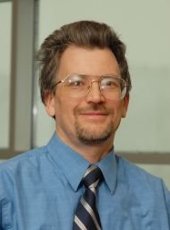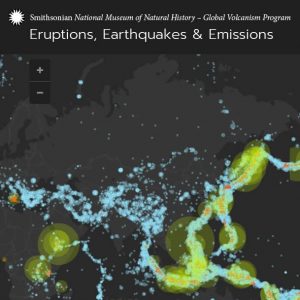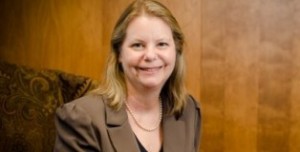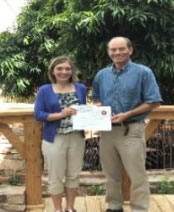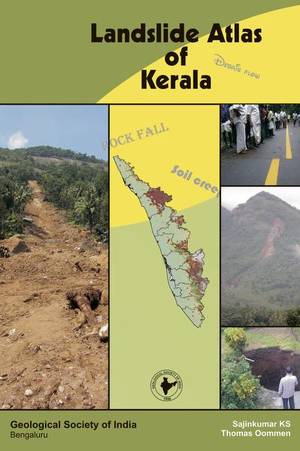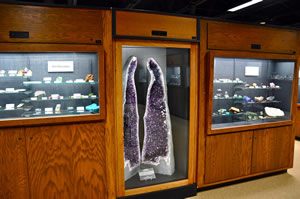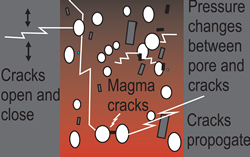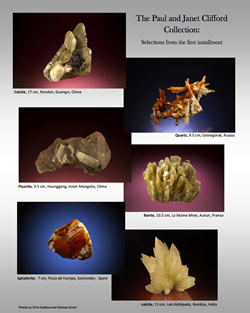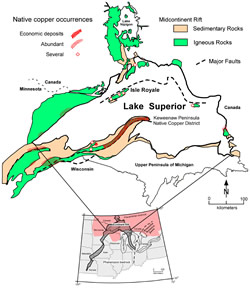 Ted Bornhorst, executive director of the A. E. Seaman Mineral Museum, and professor (GMES) recently published an article in Minerals – an Open access Mining and Mineral Processing Journal. Bornhorst’s article was titled “Copper isotope constraints on the genesis of the Keweenaw Peninsula native copper district, Michigan, USA” and was co-authored by Ryan Mathur, professor and chair of geology at Juniata College in Huntingdon, Pennsylvania.
Ted Bornhorst, executive director of the A. E. Seaman Mineral Museum, and professor (GMES) recently published an article in Minerals – an Open access Mining and Mineral Processing Journal. Bornhorst’s article was titled “Copper isotope constraints on the genesis of the Keweenaw Peninsula native copper district, Michigan, USA” and was co-authored by Ryan Mathur, professor and chair of geology at Juniata College in Huntingdon, Pennsylvania.
Minerals 2017, 7(10), 185; doi:10.3390/min7100185
Abstract
The Keweenaw Peninsula native copper district of Michigan, USA is the largest concentration of native copper in the world. The copper isotopic composition of native copper was measured from stratabound and vein deposits, hosted by multiple rift-filling basalt-dominated stratigraphic horizons over 110 km of strike length. READ MORE
